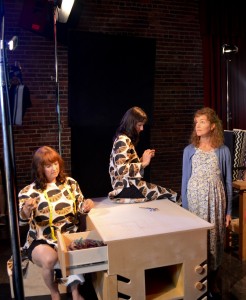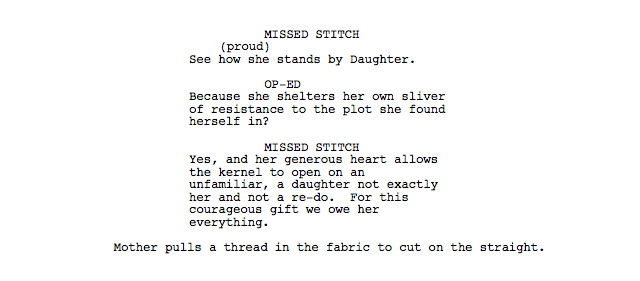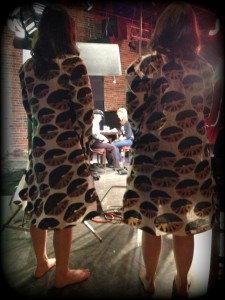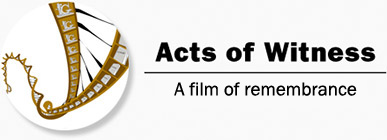Survival of the Fittest
Clip from Act Three. Fabric store flashback. MOTHER and DAUGHTER have heart to heart under the watchful eye and commentary of DOUBLE HELIX. 47 seconds. Unmixed audio.
THE STORY
The meaning of Acts of Witness is brought home in its final Act, “Survival of the Fittest,” an illustration of a narrative otherways that Daughter is arguing for in Act Two.
We begin and end in a setting of transition – Old Mother’s death room. Our story takes leave of the everyday. Spirits step in. What was once thought real, relied upon as solid and known becomes fluid, changing, like water at the mouth of a river, neither salt nor fresh.
Joining Father to stand beside her mother’s body, Daughter comes face to face with the challenge of being present with her mother’s death. She tries to receive what understanding the experience may have for her, the one who remains living. There is little to guide her.

Into the deathroom twirls DOUBLE HELIX, a physical manifestation of the turmoil inside Daughter’s heart. With so much in flux, Daughter’s emotional interior turns inside out, becoming visible.

Missed Stitch and Op-Ed at cutting table with Daughter.
Production photo by RhaeAnna Flanigan
Double Helix is a two-sided female character, tied together back to back in a paper doll dress modeled on the dress made by the Mother and found by Daughter in the first chapter. One side, MISSED STITCH, carries a sewing machine propped on her hip like a baby, the other, OP-ED, a dictionary.
Separate from and unnoticed by the main action, each of the “she-strands” of Double Helix twists round to speak directly to camera. Liaison and interpreter, she translates for us the emotional language playing out in the family – especially the tension between Daughter, trying to stand by her parents through this challenge of Mother’s decline into death, and Father, who is burdened by a mix of guilt and sense of duty.

We travel with Daughter’s memories back and forth in time as the two she-strands of Double Helix increasingly struggle within their confinement in one body. We go first to lunch in a food court where the family is in danger of splitting apart over their decision to move Old Mother to the Happy Cottage Home; then further back, well before any thoughts of dementia, to a fabric store where daughter confides to Mother her fear that her pregnancy will make Father abandon his hopes for her. Daughter knows he perceives her choice to be a mother as a sacrifice of the writer he’s raised her to be.

At end we return to the death room as Old Mother’s body is taken away. Double Helix, each half now standing separate, names Daughter’s understanding of her loss as a meant-to-be rung on the cycle of life. The DH she-strands encourage Daughter as she and Father follow Mother’s body out. Their grief shared, as is Daughter’s comprehension of the ever spinning transformation that is life.

The separated Double Helix.
Production photo by Micah Vacatio
